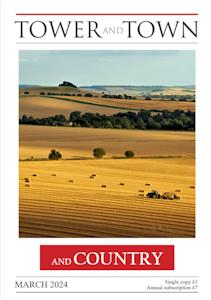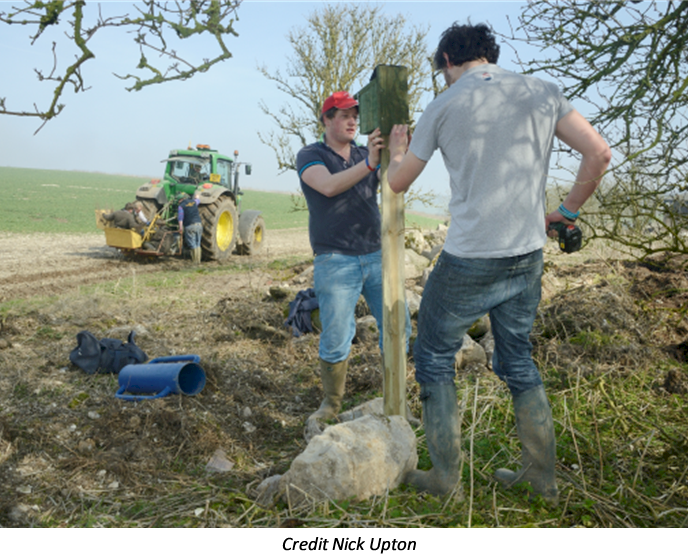

Tower and Town, March 2024 (view the full edition) (view the full edition)The Tree Sparrow StoryThe tree sparrow is the country cousin of the more familiar house sparrow. They have declined by 94% across the UK over the past 40 years, mainly due to intensification of farming. They are sadly extinct from most counties in southern England. I started the Wiltshire Tree Sparrow Recovery Project in 1999, when there were only about 30 pairs on the Marlborough and Pewsey Downs.  Initially, we researched where tree sparrows had historically been recorded. We then installed nest boxes on trees and buildings on farmland across North Wiltshire. Tree sparrows are seed eaters, so we put up some bird feeders at the same sites and provisioned them with a mix of white millet and high energy seed mix. Tree sparrows took to the nest boxes in the first year, and numbers built steadily year on year. We monitor the nest boxes and count and record all the eggs laid and young hatched. We are very careful doing this because tree sparrows are very wary around the nest. We are trained and qualified to do this to ensure that there is no risk to the birds or the nest contents. We use bird ringing, for which we are licensed, as a tool to learn how tree sparrows disperse and use the landscape. This has helped us to plan where to install the next phase of nest boxes and feeding stations, and we now have 1,200 nest boxes. Working with other groups, we have planted lots of elder trees that seem to be beneficial to tree sparrows. There has been a suite of other habitat enhancements including improving field margins, planting conservation cover crops, and creating dewponds. The number of pairs varies from year to year. They had increased to a maximum of 258 pairs using our nest boxes, but over the past 5 years there has been another nationwide decline, the cause of which is currently unknown. In 2023, 110 pairs used our nest boxes, and they raised 1,100 young to fledging. The average of 10 young per pair is a record over the normal 7-9 young per pair. This shows that nesting success and availability of insects for nestlings is not an issue - the issue is related to winter survival. Tree sparrows are extinct across most of southern England with fewer than 250 pairs south of the Midlands. With 50% of the population of southern England, it is vital that we are successful in conserving them in Wiltshire. Matt Prior |